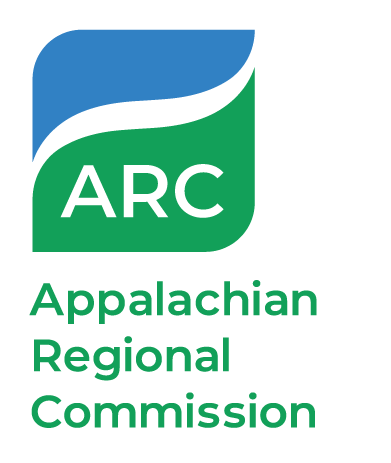Teacher Projects
During the two-week research experience, teachers conduct short-term research projects under the guidance or ORNL and ORAU mentor scientists. The culmination of this two-week experience is a poster session where the research groups present their research posters to and answer questions from federal and state ARC dignitaries, ORNL and ORAU dignitaries, parents, and friends.
Skip to: Past Academy Projects
-
3D Printing of High-Performance Magnets
This project is aimed at experimental studies of 3D printing techniques for magnet production. This project will focus on preparing bonded magnets to drastically reduce the required fraction of critical rare earths. This approach will offer the capability to design functionally graded magnets and near net shape parts where properties, such as the local coercivity, can be tailored to specific regions, thereby producing designer magnets. Additionally, near net shape processing produces negligible quantities of scrap material. In addition, the applicant will gain experience in synthesis and characterization of bonded magnets. The applicant will also gain hands on experience in fabricating printing of magnets.
ORNL Division: Chemical Sciences
Mentor: Dr. Parans Paranthaman
Facilitator: Jim Davis
Teachers: Madison Davis, Amy Hagood, Emily Robinson
-
Hydropower for Reliable and Secure Energy
Hydropower plays a key role at the intersection of two critical resources: water and energy. At its core, hydropower is an engineering marvel that powered some of the first American cities in the late 1800s, and it continues to deliver affordable and reliable electricity to homes and industries across the country, contributing to national energy security. Nearly all hydropower systems use dams to store and manage water for a variety of purposes, including flood control, navigation, and recreation. To operate effectively, hydropower requires responsible management and expertise across multiple scientific and technical disciplines. This two-week project will explore the technologies, systems, and workforce behind modern hydropower. Participants will gain a comprehensive understanding of how hydropower projects are planned, developed, and operated to meet diverse and evolving demands. The program will also examine how the industry navigates complex challenges to maintain performance, resilience, and public value. Teachers will engage in the design and construction of a small-scale hydro facility, learning how water flow is converted into usable energy through turbines and generators. They will explore how physical and geographic factors influence power production, and how hydropower facilities are engineered to maximize energy output. Using real-world datasets, participants will analyze site characteristics—such as elevation, flow rates, and regional energy demand—to determine optimal locations for new installations with high generation potential. They will also gain hands-on experience with field tools to measure water quality parameters and learn how such data supports operational planning and resource management. Building on these experiences, teachers will collaborate with researchers and peers to design and carry out a group project based on shared interests. In addition to technical exploration, the program will highlight the wide range of career pathways within the hydropower industry and the broad skill sets required—from civil engineering and instrumentation to data analysis and project management. By the end of the two weeks, teachers will leave with a deeper understanding of the hydropower sector and the many careers it offers—knowledge they can share with their students and colleagues.
ORNL Division: Environmental Science, Electrification and Energy Infrastructures, and National Security Emerging Technologies
Mentor: Lora Davis, Esther Parish, Natalie Griffiths, Scott DeNeale, Hope Corsair, Debjani Singh, Rachel Pilla
Assistant: Heather Goswami
Teachers: Melanie Bean, Kate McKinley, Cassandra Norsworthy
-
What’s so Super about Supercomputers?
We have all heard the term supercomputer, but what is it that actually makes them super? This project explores the fascinating world of supercomputers, offering teachers a comprehensive introduction to their components, history, and real-world applications. Participants will engage in hands-on learning through guided tours, interactive sessions with researchers, and the use of AI tools to understand parallel programming basics. The initiative emphasizes STEM education by equipping educators with practical computer science skills, enabling them to adapt supercomputing concepts into classroom activities.
ORNL Division: Cyber Resilience and Intelligence
Mentors: Jeff Nichols
Teachers: Tina Tipton, Aja Eddins, Lori Spencer
Past Academy Projects
-
-
Systematic Evaluation of Electronic Training Tools for The Technology Transfer of Dicentric Chromosome Assay (DCA)
Human exposure to either natural or occupational sources of ionizing radiation (IR) has become inevitable since IR is used in a wide variety of industrial and medical applications.
Human exposure to either natural or occupational sources of ionizing radiation (IR) has become inevitable since IR is used in a wide variety of industrial and medical applications. Exposure to ionizing radiation (IR) induces a wide spectrum of DNA lesions in human cells including DNA single strand breaks, double strand breaks, oxidative DNA damage and DNA-protein crosslinks. Among them, DNA double strand break is the most lethal lesion which when mis-rejoined, results in the formation of asymmetrical (dicentric chromosomes and rings) and symmetrical (translocations) chromosomal aberrations. Since radiation induced chromosome aberrations increase as a function of radiation dose, they serve as biodosimeters for estimating the absorbed radiation dose in exposed humans. Estimation of absorbed radiation dose is critical for providing appropriate medical countermeasures and for predicting long-term adverse health effects such as cancer. At the Cytogenetics Biodosimetry Laboratory (CBL) at Oak Ridge, the dicentric chromosome assay (DCA) is routinely used for estimating the absorbed radiation dose in the peripheral blood lymphocytes of humans after accidental or occupational exposures. Currently, there are only a couple of cytogenetic biodosimetry laboratories that have the expertise to perform DCA and this would create a bottleneck if several hundreds and thousands of samples need to be analyzed after any radiological/nuclear mass casualty incident. In addition to dose estimation for occupationally or accidentally exposed humans, DCA is increasingly used in clinical biodosimetry field for cancer patients undergoing radiation therapy and for detecting medical diagnostic overexposures during various medical procedures. There are about 200 clinical cytogenetic laboratories in the US and transfer of DCA technology to those laboratories will likely enhance our national's emergency response and preparedness measures. To facilitate the DCA technology transfer to academic, clinical, and national laboratories, REAC/TS CBL has recently developed a virtual DCA educational tool in conjunction with dicentric chromosome challenge game. The participants of the ARC summer program will critically evaluate these electronic tools by determining the feasibility of performing the DCA by following the technical procedures described in the virtual DCA protocol.
ORNL Division: Cytogenic Biology Laboratory, REACTS, Oak Ridge Institute for Science and Education
Mentor: Adayabalam S. Balajee, Ph.D.
Assistants: Terri Ryan and Maria Escalona
Teachers: Breanna Weber
-
Cultivation of Trees for Improved Visualization of Cell Wall Structure
Our objective is to grow biomass feed stocks switchgrass and poplar trees with increased incorporation of stable isotope deuterium to enable improved visualization of biomass structural details with neutron scattering and NMR.
We will continue development of methods for poplars and other trees. Teachers will assist with propagation and cultivation of poplars in different growth media and monitoring photosynthesis by CO2 uptake and O2 production. We are also growing cellulose-producing acetic acid bacteria and algae for certain experiments in support of this task.
ORNL Division: Chemical Sciences Division
Mentor: Barbara R. Evans
Assistant: Heather Goswami
Teachers: Stacy Knoechel
-
Minimizing Environmental Impacts of Hydropower
Hydropower plays a key role at the intersection between two of society’s great resources: water and energy.
As a renewable energy resource, hydropower provides value as a low-cost source of electricity, providing clean power to homes and industry. At its core, hydropower is an engineering marvel that powered some of the first cities in the late 1800’s. The dams that impound water alter the natural flow patterns of rivers and enable storage for a variety of purposes, like flood control, navigation, and recreation. In the past 50 years, much knowledge has been gained to better understand hydropower dams and their effects on streams and reservoirs. To operate effectively, hydropower must be managed in an environmentally and socially responsible way, requiring knowledge across multiple science disciplines. During this two-week project, we will explore hydropower as a key renewable energy and ways that projects can be constructed and operated in environmentally compatible ways. Topics will include a general overview of hydropower engineering, power production, site development, water quality effects, ecological health, and community impacts. We intend to engage teachers through hands-on experiences in conducting experiments and measuring environmental attributes using cutting-edge technologies such as remote autonomous drones and aquatic forensics with environmental DNA. We will expose them to a variety of datasets and teach them some ways to conduct and present the results of data analysis. Together, we will develop a group research project based on the interests of the teachers who select this topic. At the end of two weeks, teachers will also leave with a better understanding of the variety of careers associated with the hydropower industry, so teachers can share that information with their students and colleagues.
ORNL Division: Environmental Science, Electrification and Energy Infrastructures, and National Security Emerging Technologies
Mentors: Lora Davis, Kristine Moody, Esther Parish, Natalie Griffiths, Scott DeNeale, Hope Corsair, Anurupa Roy, Debjani Singh
Assistants: Stephen Gardner, Rachel Pilla
Teachers: Lydia Freeman and Kali Tomlinson
-
-
-
Systematic Evaluation of Electronic Training Tools for The Technology Transfer of Dicentric Chromosome Assay (DCA)
Human exposure to either natural or occupational sources of ionizing radiation (IR) has become inevitable since IR is used in a wide variety of industrial and medical applications.
Exposure to ionizing radiation (IR) induces a wide spectrum of DNA lesions in human cells including DNA single strand breaks, double strand breaks, oxidative DNA damage and DNA-protein crosslinks. Among them, DNA double strand break is the most lethal lesion which when mis-rejoined, results in the formation of asymmetrical (dicentric chromosomes and rings) and symmetrical (translocations) chromosomal aberrations. Since radiation induced chromosome aberrations increase as a function of radiation dose, they serve as biodosimeters for estimating the absorbed radiation dose in exposed humans. Estimation of absorbed radiation dose is critical for providing appropriate medical countermeasures and for predicting long-term adverse health effects such as cancer.
At the Cytogenetics Biodosimetry Laboratory (CBL) at Oak Ridge, the dicentric chromosome assay (DCA) is routinely used for estimating the absorbed radiation dose in the peripheral blood lymphocytes of humans after accidental or occupational exposures. Currently, there are only a couple of cytogenetic biodosimetry laboratories that have the expertise to perform DCA and this would create a bottleneck if several hundreds and thousands of samples need to be analyzed after any radiological/nuclear mass casualty incident. In addition to dose estimation for occupationally or accidentally exposed humans, DCA is increasingly used in clinical biodosimetry field for cancer patients undergoing radiation therapy and for detecting medical diagnostic overexposures during various medical procedures. There are about 200 clinical cytogenetic laboratories in the US and transfer of DCA technology to those laboratories will likely enhance our national's emergency response and preparedness measures. To facilitate the DCA technology transfer to academic, clinical, and national laboratories, REAC/TS CBL has recently developed a virtual DCA educational tool in conjunction with dicentric chromosome challenge game. The participants of the ARC summer program will critically evaluate these electronic tools by determining the feasibility of performing the DCA by following the technical procedures described in the virtual DCA protocol.
ORNL Division: CBL, REAC/TS, ORISE
Mentor:Dr. Adayabalam S. Balajee
Assistants: Terri Ryan and Maria Escalona
Teachers: Valerie Hinton and Megan McKillop
-
3D Printing of High-Performance Magnets
This project is aimed at experimental studies of 3D printing techniques for magnet production.
This project will focus on preparing bonded magnets to drastically reduce the required fraction of critical rare earths. This approach will offer the capability to design functionally graded magnets and near net shape parts where properties, such as the local coercivity, can be tailored to specific regions, thereby producing designer magnets. Additionally, near net shape processing produces negligible quantities of scrap material. In addition, the applicant will gain experience in synthesis and characterization of bonded magnets. The applicant will also gain hands on experience in fabricating printing of magnets.
ORNL Division: Chemical Sciences
Mentor:Parans Paranthaman
Facilitator: Jim Davis
Teachers: Steven Bauer and Lee Kaltman
-
Cultivation of Plants for Improved Visualization of Biomass Structure
Our objective is to grow plants with increased incorporation of stable isotope deuterium to enable improved visualization of biomass structural details with neutron scattering and NMR.
The biomass feedstocks switchgrass and poplar are the target plants for this work. Hydroponic and agar-based methods that were successfully used for eucalyptus and switchgrass need to be adapted or changed for poplars. Teachers will assist with propagation and cultivation of poplars in different growth media and monitoring photosynthesis by CO2 uptake and O2 production. We are also growing cellulose-producing acetic acid bacteria and algae for certain experiments in support of this task
ORNL Division: Chemical Sciences
Mentor:Dr. Barbara R. Evans
Assistant: Lauren Dubay
Teachers: Tekelia Kelly and Robert Ulmer
-
-
-
Comparative Evaluation of Cytogenetic Biodosimetry Techniques for Absorbed Radiation Dose Estimation in Humans
Human exposure to either natural or occupational sources of ionizing radiation (IR) has become inevitable since IR is used in a wide variety of industrial and medical applications.
Exposure to ionizing radiation (IR) induces a wide spectrum of DNA lesions in human cells including DNA single strand breaks, double strand breaks, oxidative DNA damage and DNA-protein crosslinks. Among them, DNA double strand break is the most lethal lesion which when mis-rejoined, results in the formation of asymmetrical (dicentric chromosomes and rings) and symmetrical (translocations) chromosomal aberrations. Since radiation induced chromosome aberrations increase as a function of radiation dose, they serve as biodosimeters for estimating the absorbed radiation dose in exposed humans. Estimation of absorbed radiation dose is critical for providing appropriate medical countermeasures and for predicting long-term adverse health effects such as cancer.
At the Cytogenetics Biodosimetry Laboratory (CBL) at Oak Ridge, the dicentric chromosome assay (DCA) is routinely used for estimating the absorbed radiation dose in the peripheral blood lymphocytes of humans after accidental or occupational exposures. The cytokinesis-block micronucleus (CBMN) assay is yet another method for measuring chromosomal damage and micronuclei originate from whole chromosomes or chromosome fragments that are excluded from the main nucleus. Micronucleus formation is usually analyzed in binucleate cells after the first cell division where the cytoplasmic division is blocked by Cytochlasin B. Similar to chromosome aberrations, micronucleus frequency also increases as a function of radiation dose. Both DCA and CBMN are commonly used in many cytogenetic biodosimetry laboratories. In this project, absorbed radiation dose prediction accuracy of both DCA and CBMN techniques will be systematically evaluated in the peripheral human lymphocytes after ex vivo irradiation with different doses of X-rays. For comparative evaluation, absorbed radiation doses (biodoses) estimated by both techniques using specific calibration curves will be compared with the actual delivered physical doses. Results of this project will determine which of the two techniques is accurate in predicting the absorbed radiation dose.
Working in a virtual format this year, the CBL staff will teach the participants about basic radiation biology concepts along with the purpose and operational aspects of REAC/TS and the CBL. Participants will be trained to identify and score the frequency of ionizing radiation induced chromosome aberrations, particularly dicentric chromosomes, using the digital images obtained from previously processed human blood samples irradiated with different radiation doses. Additionally, the participants will be using data analytics to test and evaluate their ability in dicentric chromosome scoring by participating in the “Dicentric Challenge: Chromosome Scoring Game” on the ORISE website developed by the CBL and ORAU staff.
Our main goal, as always, is to educate and train people in dicentric chromosome scoring for increasing the surge capacity of potential scorers that will likely augment CBL’s capacity in providing a rapid personalized radiation dose assessment to hundreds and thousands of people exposed during any radiological/nuclear mass casualty incident(s).
ORNL Division: Cytogenic Biology Laboratory, REACTS, Oak Ridge Institute for Science and Education
Mentor: Adayabalam S. Balajee, Ph.D.
Assistants: Terri Ryan and Maria Escalona
Teachers: Brian McNeel and Jude Platukis
-
Photo-Based Quantification of Enzymatic Degradation of Solids
Our objective is to evaluate photography-based quantification of enzymatic deconstruction of cellulose and plastics by comparison to spectrophotometric assays.
Enzymatic deconstruction of both natural biomass and synthetic plastics potentially offers sustainable ways to produce fuels and materials. Plant biomass is composed of polymers cellulose, hemicellulose, and lignin, which can be utilized as materials or used to produce fuels and chemicals. Depolymerization of plastics can enable chemical recycling and upcycling. But monitoring depolymerization is complicated by the solid nature of biomass and plastics. Both familiar colorimetric test tube assays and high-throughput multi-well plate readers typically use soluble substrates and detect soluble products released from polymer surfaces. Inexpensive, portable versions are desirable to enable monitoring of polymer breakdown in agriculture, industry, and recycling. Photography using webcams or cell phones could potentially estimate both decrease in solids and colorimetric assay of products. We will examine how photo analysis compares to spectrophotometry for cellulose and other polymer examples.
ORNL Division: Chemical Sciences Division
Mentor: Barbara R. Evans
Teachers: Katie Talbert and Alex Lipnicki
-
3D Printing of High-Performance Magnets
This project is aimed at experimental studies of 3D printing techniques for magnet production. This project will focus on preparing bonded magnets to drastically reduce the required fraction of critical rare earths.
This approach will offer the capability to design functionally graded magnets and near net shape parts where properties, such as the local coercivity, can be tailored to specific regions, thereby producing designer magnets. Additionally, near net shape processing produces negligible quantities of scrap material. In addition, the applicant will gain experience in synthesis and characterization of bonded magnets. The applicant will also gain hands on experience in fabricating printing of magnets.
ORNL Division: Chemical Sciences
Mentor: M. Parans Paranthaman
Facilitator: James R. Davis
Teachers: Williams Sears and Jade Robertson
-
Computer Simulations of Simple Polymers and Polymers in Solvents
The visiting group will be introduced to predicting 3D structures of small peptides via template- based homology modeling which will be followed by molecular dynamics (MD) simulations to observe the predicted structure evolve over time.
To demonstrate the folding/unfolding structure of peptides, MD simulations will be performed at ambient conditions and at a very high temperature, where thermally induced quick unfolding can be achieved. The fundamentals of homology modeling and MD simulations will be discussed in brief. As a case study, we will utilize two small peptides – a beta hairpin having a known crystal structure and (AAQAA)3 - a disordered peptide. The homology modeling will be performed using graphical interface-based web-server, SWISSMODEL and MD simulations will be carried out using QwikMD plugin that is implemented in Visual Molecular dynamics (VMD) program package and can be run on personal laptops. The MD simulation trajectories will be visualized and analyzed in VMD with the calculation of structure-based quantities such as radius of gyration and dynamical properties such as the making and breaking of hydrogen bonds to allow for a physical interpretation of the peptide structure and its folding/unfolding behavior. This project, while previously computationally demanding, can now be performed on desktop and laptop computers at the high school level due to advances in MD simulation software implementation as well as processor speed, and as such, the work performed here is directly transferable to the classroom.
ORNL Division: Center for Molecular Biophysics, Biosciences Division
Mentor: Jeremy Smith
Assistants: Shalini Jayaraman Rukmani and Vaidyanathan Sethuraman
Teacher: Vincent O’Leary
-
-
-
Cytogenetic Biodosimetry Tools for Absorbed Radiation Dose Estimation in Humans
Human exposure to either natural or occupational sources of ionizing radiation (IR) has become inevitable since IR is used in a wide variety of industrial and medical applications.
Exposure to ionizing radiation (IR) induces a wide spectrum of DNA lesions in human cells including DNA single strand breaks, double strand breaks, oxidative DNA damage and DNA-protein crosslinks. Among them, DNA double strand break is the most lethal lesion which when mis-rejoined, results in the formation of asymmetrical (dicentric chromosomes and rings) and symmetrical (translocations) chromosomal aberrations. Since frequencies of different chromosomal aberrations correlate with radiation dose, they serve as biodosimeters for estimating the absorbed radiation dose in humans. At the Cytogenetics Biodosimetry Laboratory (CBL) at Oak Ridge, the dicentric chromosome assay is routinely used for estimating the absorbed radiation dose in the peripheral blood lymphocytes of humans after accidental or occupational exposures. In addition to dicentric chromosomes, analysis of stable chromosomal translocations is also carried out at the CBL for retrospective biodosimetry on select individuals with a past radiation exposure history.
Working in a virtual format this year, the CBL staff will teach the participants about basic radiation biology concepts along with the purpose and operational aspects of REAC/TS and the CBL. Participants will be trained to identify and score the frequency of ionizing radiation induced chromosome aberrations, particularly dicentric chromosomes, using the digital images obtained from previously processed human blood samples irradiated with different radiation doses. Additionally, the participants will be using data analytics to test and evaluate their ability in dicentric chromosome scoring by participating in the “Dicentric Challenge: Chromosome Scoring Game” on the ORISE website developed by the CBL and ORAU staff.
Our main goal, as always, is to educate and train people in dicentric chromosome scoring for increasing the surge capacity of potential scorers that will likely augment CBL’s capacity in providing a rapid personalized radiation dose assessment to hundreds and thousands of people exposed during any radiological/nuclear mass casualty incident(s).
ORNL Division: CBL, REAC/TS, ORISE, ORAU
Mentor: Adayabalam S. Balajee, Ph.D.
Assistants: Terri Ryan and Maria Escalona
Teachers: John Godward and Devlin Marcum
-
-
-
Cytogenetic Biodosimetry Tools for Absorbed Radiation Dose Estimation in Humans
Human exposure to either natural or occupational sources of ionizing radiation (IR) has become inevitable since IR is used in a wide variety of industrial and medical applications.
Exposure to ionizing radiation (IR) induces a wide spectrum of DNA lesions in human cells including DNA single strand breaks, double strand breaks, oxidative DNA damage and DNA-protein crosslinks. Among them, DNA double strand break is the most lethal lesion which when mis-rejoined, results in the formation of asymmetrical (dicentric chromosomes and rings) and symmetrical (translocations) chromosomal aberrations. Since frequencies of different chromosomal aberrations correlate with radiation dose, they serve as biodosimeters for estimating the absorbed radiation dose in humans. At the Cytogenetics Biodosimetry Laboratory (CBL) at Oak Ridge, the dicentric chromosome assay is routinely used for estimating the absorbed radiation dose in the peripheral blood lymphocytes of humans after accidental or occupational exposures. In addition to dicentric chromosomes, analysis of stable chromosomal translocations is also carried out at the CBL for retrospective biodosimetry on select individuals with a past radiation exposure history.
Working in a virtual format this year, the CBL staff will teach the participants about basic radiation biology concepts along with the purpose and operational aspects of REAC/TS and the CBL. Participants will be trained to identify and score the frequency of ionizing radiation induced chromosome aberrations, particularly dicentric chromosomes, using the digital images obtained from previously processed human blood samples irradiated with different radiation doses. Additionally, the participants will be using data analytics to test and evaluate their ability in dicentric chromosome scoring by participating in the “Dicentric Challenge: Chromosome Scoring Game” on the ORISE website developed by the CBL and ORAU staff.
Our main goal, as always, is to educate and train people in dicentric chromosome scoring for increasing the surge capacity of potential scorers that will likely augment CBL’s capacity in providing a rapid personalized radiation dose assessment to hundreds and thousands of people exposed during any radiological/nuclear mass casualty incident(s).
ORNL Division: CBL, REAC/TS, ORISE, ORAU
Mentor: Adayabalam S. Balajee
Assistants: Terri Ryan, Maria Escalona
Teachers: Jessica Cutlip, Chelsea Johnson, Brian Lewis, Nghia Nguyen, Jonathan Stephens, Barbara Waters
-
Evaluation of the Properties of Cross-Linked Polymers
This research project, conducted in the homes of participant teachers, will provide participants with the opportunity to complete the processes required to conduct a research project.
The project will examine cross-linked polymers. Specifically, cross-linking several substances using borate solutions to accomplish the cross-link. The prepared polymeric substances will exhibit gel properties that the group members will evaluate to form conclusions regarding variations in substance properties.
ORNL Division: Chemical Sciences
Mentor: M. Parans Paranthaman
Facilitator: James R. Davis
Teachers: Casey Bass, Randall Dunkin, Frank Kovscek, Brynna Ryle, Michele Verdi
-
Growing Greenhouse Tomatoes for Volatiles
Teachers will assist with optimization of hydroponic tomato growth as part of a project with the goal of utilization of tomato volatiles for energy production.
Tomatoes constitute the largest crop produced in greenhouses and other covered cultivation facilities. Like many plants, they naturally emit biogenic volatile organic compounds (BVOCs), which contribute to atmospheric organic aerosols and are expected to increase globally with temperature. Even at the local level, BVOCs from greenhouses, particularly those located in urban areas, contribute to air pollution issues. Instead of venting these BVOCs, they could be used to generate electricity through combustion by suitable catalysts to CO2 which would be taken up through photosynthesis by the plants. To provide preliminary data to support this concept, we will grow two different tomato varieties under various conditions, analyzing germination and growth rate, and estimate leaf volatile emission and leaf surface area.
ORNL Division: Chemical Sciences
Mentor: Barbara R. Evans
Teachers: Miranda Carman, Brandon Gerwig, Emily Gunderson, Audrey Hamilton, James Hemminger, Carla Taylor
-
-
-
Biomolecular Simulations to Understand Protein Folding/Unfolding Equilibria and Protein-Drug Interactions
The visiting group will be introduced to basic concepts of molecular dynamics simulations for small peptides.
The visiting group will be introduced to basic concepts of molecular dynamics simulations for small peptides. The folding/unfolding thermal equilibria for peptides will be studied by performing molecular dynamics (MD) simulations at ambient conditions and at very high temperatures to induce thermal unfolding. This will be demonstrated using two peptides with different secondary structure: Trpzip4 (16 residues) which has a beta-sheet structure and alpha-helical Trp-cage (20 residues). MD simulations will be performed using QwikMD plugin that is implemented in VMD (Visual Molecular Dynamics). The MD simulation trajectories will be visualized and analyzed in VMD and structure-based quantities such as radius of gyration and root mean square deviations will be calculated to understand folding/unfolding behavior. For proteins and peptides with no available crystal structure, the concept of homology modeling will be introduced. The homology modeling will be performed using SWISSMODEL, a web-based tool with graphical user interface (GUI). As a case study, ABL kinase (260 residues) will be used. To study the interaction between ABL kinase and small molecule drug, step-wise demonstration of homology modeling, docking, and MD simulations will be performed. Molecular docking software predict the preferred orientation and the binding affinity of one molecule to a second when bound to each other. Researchers employ docking to find suitable candidates for creating new drugs. In this workshop, we will demonstrate a simple way to perform molecular docking by using web-based docking tool, SWISSDOCK. All the softwares can be run on personal laptops.
ORNL Division: Biosciences
Mentor: Jeremy Smith
Facilitator: Brian Hingerty
Assistants: Madhulika Gupta, Shawn Shen, Yead Jewel, Zhongyou Mou
Teachers: Nikki Hudspeth, Johnna Towsey, David Wehunt
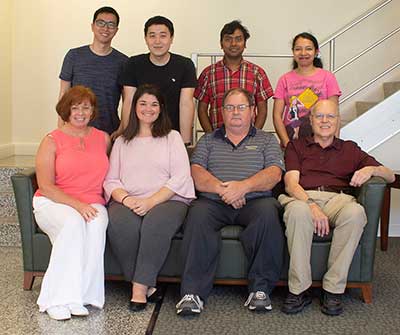
-
Computational Investigation of the Monte Carlo Method for Shielding Optimization and Tally Statistics
This project will bring together concepts of nuclear physics, applied math/statistics, and computer science.
This project will bring together concepts of nuclear physics, applied math/statistics, and computer science. A simple 1-D Monte Carlo neutron transport code will be used to investigate two basic research questions. First, when solving the Boltzman radiation transport equation using the Monte Carlo method, are batch statistics or history statistics better for dose tallies? Second, what shielding configuration is optimal for reducing radiation dose rate? Both of these questions will be answered by performing shielding optimization on a simple neutron transport problem using Python and Jupyter Notebooks with the 1-D Monte Carlo code mentioned above. Although simple, these research questions show how computational methods are used for nuclear engineering and will give insight into which statistical methods are better for tallies as the nuclear research community moves toward solving very large problems with cutting-edge high-performance supercomputers that take advantage of new GPU architectures.
ORNL Division: Reactor and Nuclear Systems
Mentor: Tara Pandya
Assistants: Thomas Evans, Elliott Biondo, Katherine Royston, Gregory Davidson, Seth Johnson, Steven Hamilton
Teachers: Kayla Bruening, David Burkhart, Rebecca Rosas
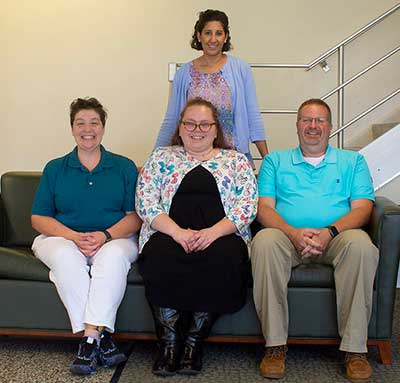
-
Investigation of Cell Wall Structure to Improve Biofuel Production
Teachers will help produce and characterize biomass from switchgrass and algae as part of a research project that uses neutron scattering and computer simulation to examine the fundamental structure of plant cell walls.
Teachers will help produce and characterize biomass from switchgrass and algae as part of a research project that uses neutron scattering and computer simulation to examine the fundamental structure of plant cell walls. The project goal is to find better, faster ways to obtain biofuels and bioproducts from photosynthetic biomass. Switchgrass mutants with specific changes to cell wall components lignin and cellulose are studied for development of better biofuel feed stocks. Algae are being investigated as sources of deuterated cellulose and other polysaccharides for structural studies. Plants and algae are produced under controlled lab conditions to obtain deuterium-labeled biomass samples for neutron scattering and NMR experiments. Labeling with deuterium, the naturally occurring, stable heavy isotope of hydrogen, is a standard method for neutron scattering, NMR, and kinetic research. The teachers will assist in laboratory production of grasses and algae for these structural studies. Light microscopy will be used to examine cellular structure at the micrometer level. Photosynthetic activity will be evaluated by measuring chlorophyll fluorescence, carbon dioxide uptake and oxygen evolution.
ORNL Division: Chemical Sciences
Mentor: Barbara R. Evans
Teachers: Lisa Fry, Fatemia Fuson, Shelly Nixon, Michael Reibson
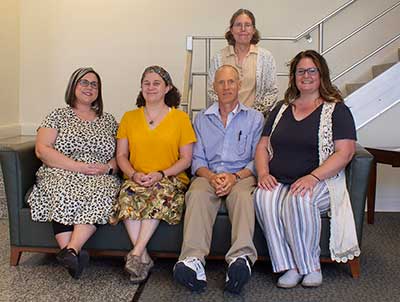
-
Optimization of Cytogenetic Biodosimetry Tools for Estimating Absorbed Radiation Dose in Humans
In the current project, teachers will be trained to recognize and score the frequency of different chromosomal aberrations in lymphocyte samples irradiated with different doses of gamma rays. Additionally, teachers will participate in a project that is aimed to optimize the laboratory conditions for the preparation of high quality metaphase chromosome spreads using a state of the art HANABI-PV Metaphase Auto-Spreader Mini.
Human exposure to either natural or occupational sources of ionizing radiation (IR) has become inevitable since IR is being used in a wide variety of industrial and medical applications. Exposure to ionizing radiation (IR) induces a wide spectrum of DNA lesions in human cells including DNA single strand breaks, double strand breaks, oxidative DNA damage and DNA-protein crosslinks. Among them, double strand break (DSB) is the most lethal lesion, which when mis-rejoined, results in the formation of asymmetrical (dicentric chromosomes and rings) and symmetrical (translocations) chromosomal aberrations. Since frequencies of different chromosomal aberrations correlate with radiation dose, they serve as biodosimeters for estimating the absorbed radiation dose in humans. At the Cytogenetics Biodosimetry Laboratory at Oak Ridge, dicentric chromosome assays is routinely used for estimating the absorbed radiation dose in the peripheral blood lymphocytes of humans after accidental or occupational exposures. In the current project, teachers will be trained to recognize and score the frequency of different chromosomal aberrations in lymphocyte samples irradiated with different doses of gamma rays. Additionally, teachers will participate in a project that is aimed to optimize the laboratory conditions for the preparation of high quality metaphase chromosome spreads using a state of the art HANABI-PV Metaphase Auto-Spreader Mini. Temperature, humidity and airflow settings will be investigated, adjusted and optimized thus ensuring that when chromosomes are dropped and spread on microscope slides, they are dried in a consistent and reproducible manner. Our main objective is to optimize automation of chromosome preparation process facilitating the yield of high quality of chromosome spreads for automated dicentric chromosome analysis. The chromosome spreading process for radiation dose assessment of human blood samples will thus become more streamlined and consistent for high throughput analysis platforms. Comparison of automated and manual dicentric scoring using FISH techniques will be performed concurrently using the Metafer DCScore algorithm. Our main goal, as always, is to educate and train people in dicentric chromosome scoring for increasing the surge capacity of potential scorers that will likely constitute an effective emergency triage tool to provide personalized radiation dose assessment to hundreds and thousands of people who are likely to get exposed during radiological/nuclear mass casualty incident(s).
ORNL Division: CBL, REACTS, ORISE
Mentor: Adayabalam S. Balajee
Assistants: Terri Ryan, Maria Escalona, Tammy Smith
Teachers: Roy Jameson, Meredith Spano, Carey Wilson
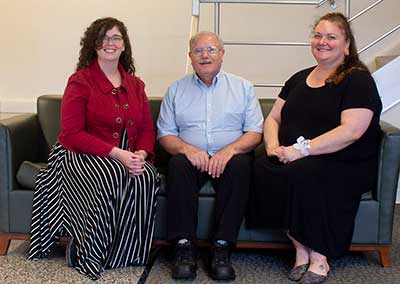
-
3D Printing of High Performance Magnets
This project is focused on the additive manufacturing techniques to print magnets with complex size and shape.
This research project will be conducted in ORNL’s Chemical Sciences Division (CSD), Materials Chemistry Group and is designed to allow participants to better understand processes required to conduct a research project on 3D printing of magnets. The teachers will experience the multifaceted levels of conducting research. They will be given a research assignment and work with a research scientist to understand the required background, processes, and safety procedures. Along with learning to apply many scientific concepts to a real-world problem, they will learn laboratory skills which will enrich and enhance their teaching when they return to their classrooms. In addition, during the two-week program, the teachers will meet other researchers within the Group and Laboratory community and learn about other ORNL projects.
ORNL Division: Chemical Sciences
Mentor: M. Parans Paranthaman
Facilitator: Jim Davis
Teachers: Lisa Castle, Brittany Cohen, James Kupetz
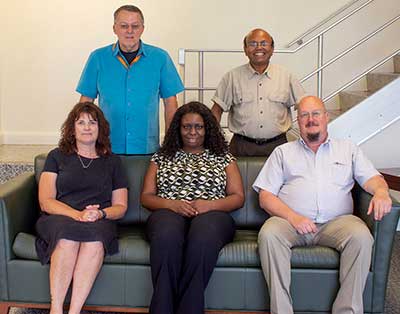
-
-
- 3D Printing of High Performance Magnets
- Introduction to homology modeling of small peptides and observation of their folding/unfolding behavior using molecular dynamics simulations
- Use of molecular cytogenetic tools for the assessment of absorbed radiation dose in humans
- Investigation of lignocellulosic biomass structure
3D Printing of High Performance Magnets
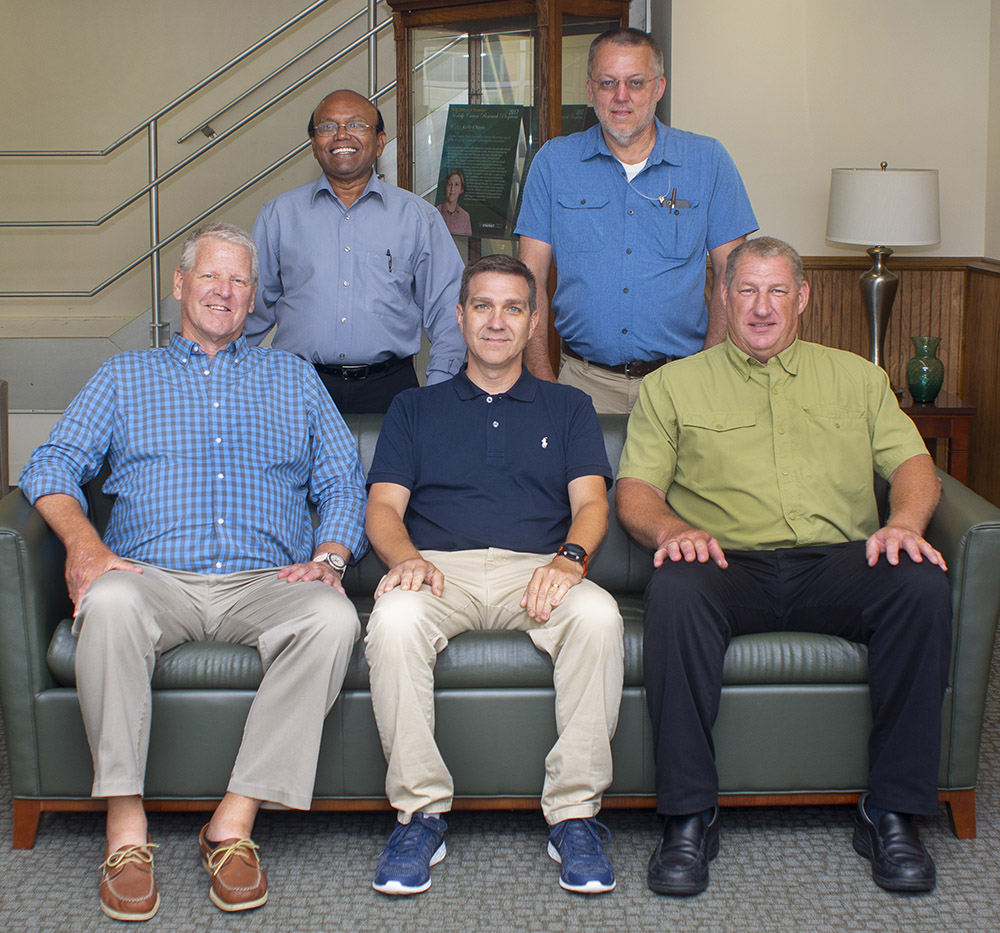 This project is focused on the additive manufacturing techniques to print magnets with complex size and shape. Big Area Additively Manufactured (BAAM) NdFeB bonded magnets with performance comparable to, or better than, magnets of the same composition made using traditional injection molding. Magnetic properties will be measured. Additive manufacturing can now be applied for a wide range of magnetic materials and assemblies. We will review all the additive printing techniques that are suitable for fabricating bonded magnets. This work is supported by the Critical Materials Institute, an Energy Innovation Hub funded by the U.S. Department of Energy, Office of Energy Efficiency and Renewable Energy, Advanced Manufacturing Office.
This project is focused on the additive manufacturing techniques to print magnets with complex size and shape. Big Area Additively Manufactured (BAAM) NdFeB bonded magnets with performance comparable to, or better than, magnets of the same composition made using traditional injection molding. Magnetic properties will be measured. Additive manufacturing can now be applied for a wide range of magnetic materials and assemblies. We will review all the additive printing techniques that are suitable for fabricating bonded magnets. This work is supported by the Critical Materials Institute, an Energy Innovation Hub funded by the U.S. Department of Energy, Office of Energy Efficiency and Renewable Energy, Advanced Manufacturing Office.ORNL Division:
Mentor: Parans Paranthaman
Facilitator: Jim Davis
Teachers: Dana Hallyburton, John Swanson, Paul Scott
Introduction to homology modeling of small peptides and observation of their folding/unfolding behavior using molecular dynamics simulations
 The visiting group will be introduced to predicting 3D structures of small peptides via template- based homology modeling which will be followed by molecular dynamics (MD) simulations to observe the predicted structure evolve over time. To demonstrate the folding/unfolding structure of peptides, MD simulations will be performed at ambient conditions and at a very high temperature, where thermally induced quick unfolding can be achieved. The fundamentals of homology modeling and MD simulations will be discussed in brief. As a case study, we will utilize two small peptides – a beta hairpin having a known crystal structure and (AAQAA)3 - a disordered peptide. The homology modeling will be performed using graphical interface-based web-server, SWISSMODEL and MD simulations will be carried out using QwikMD plugin that is implemented in Visual Molecular dynamics (VMD) program package and can be run on personal laptops. The MD simulation trajectories will be visualized and analyzed in VMD with the calculation of structure-based quantities such as radius of gyration and dynamical properties such as the making and breaking of hydrogen bonds to allow for a physical interpretation of the peptide structure and its folding/unfolding behavior. This project, while previously computationally demanding, can now be performed on desktop and laptop computers at the high school level due to advances in MD simulation software implementation as well as processor speed, and as such, the work performed here is directly transferable to the classroom.
The visiting group will be introduced to predicting 3D structures of small peptides via template- based homology modeling which will be followed by molecular dynamics (MD) simulations to observe the predicted structure evolve over time. To demonstrate the folding/unfolding structure of peptides, MD simulations will be performed at ambient conditions and at a very high temperature, where thermally induced quick unfolding can be achieved. The fundamentals of homology modeling and MD simulations will be discussed in brief. As a case study, we will utilize two small peptides – a beta hairpin having a known crystal structure and (AAQAA)3 - a disordered peptide. The homology modeling will be performed using graphical interface-based web-server, SWISSMODEL and MD simulations will be carried out using QwikMD plugin that is implemented in Visual Molecular dynamics (VMD) program package and can be run on personal laptops. The MD simulation trajectories will be visualized and analyzed in VMD with the calculation of structure-based quantities such as radius of gyration and dynamical properties such as the making and breaking of hydrogen bonds to allow for a physical interpretation of the peptide structure and its folding/unfolding behavior. This project, while previously computationally demanding, can now be performed on desktop and laptop computers at the high school level due to advances in MD simulation software implementation as well as processor speed, and as such, the work performed here is directly transferable to the classroom.ORNL Division: Bioscience
Mentor: Jeremy Smith
Assistants: Michelle Aranha, Utsab Shrestha, Deepa Devarajan, and Sarah Cooper
Teachers: Karan Linkous, Raymona Pedigo, Adam Steininger
Use of molecular cytogenetic tools for the assessment of absorbed radiation dose in humans
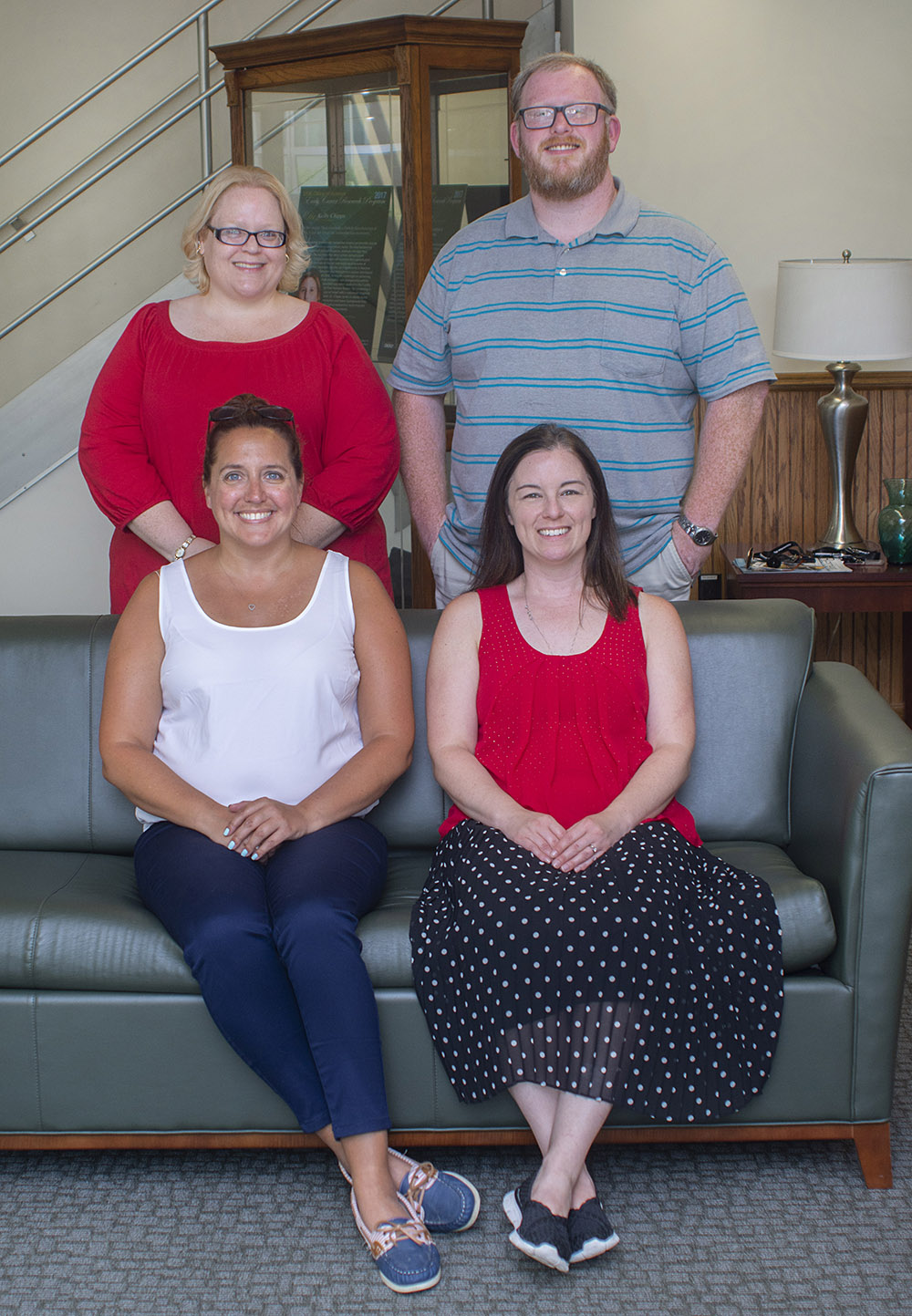
- Dicentric chromosome analysis for ionizing radiation dose assessment
- Use of fluorescence in situ hybridization (FISH) for retrospective biodosimetry
- Micronuclei analysis for radiation dose assessment and for prediction of inherent genomic instability in humans
- Analysis of neutrophil alterations for detecting in vivoradiation exposure
- G2-PCC assay for estimating radiation dose after acute exposure
Summary description of project
Human exposure to either natural or occupational sources of ionizing radiation (IR) has become inevitable since IR is being used in a wide variety of industrial and medical applications. Exposure to ionizing radiation (IR) induces a wide spectrum of DNA lesions in human cells including DNA single strand breaks, double strand breaks, oxidative DNA damage and DNA-protein crosslinks. Among them, double strand break (DSB) is the most lethal lesion, which when mis-rejoined, results in the formation of asymmetrical (dicentric chromosomes and rings) and symmetrical (translocations) chromosomal aberrations. Since the frequencies of different chromosomal aberrations correlate with radiation dose, they serve as biodosimeters for estimating the absorbed radiation dose in humans. At the Cytogenetics Biodosimetry Laboratory at Oak Ridge, micronucleus and dicentric chromosome assays are being routinely used for estimating the absorbed radiation dose in the peripheral blood lymphocytes of humans after accidental or occupational exposures. In the current project, teachers will be trained to recognize and score the frequency of different chromosomal aberrations in blinded lymphocyte samples irradiated with different doses of gamma rays. Additionally, teachers will participate in a project that is aimed to analyze genome-wide distribution of IR induced symmetrical chromosomal aberrations (translocations) using the state of the art technique, multicolor fluorescence in situ hybridization (M-FISH). Translocations are stable exchanges between different chromosomes that have the potential to drive cancer development processes. Our main goal is to educate and train people in dicentric chromosome scoring which will increase the surge capacity of potential scorers in case a large number of samples are to be analyzed after radiological or nuclear mass casualty incidents where hundreds and thousands of people are likely to get radiation exposure.
ORNL Division: CBL, REACTS, ORISE
Mentor: Adayabalam S. Balajee
Assistants: Maria Escalona and Terry Ryan
Teachers: Michael Adam, Kristy Garlitz, Christy Hall, Michelle Polcaro
Investigation of lignocellulosic biomass structure
 Teachers will help produce and characterize biomass from plants as part of a research project that uses neutron scattering and computer simulation to examine the fundamental structure of plant cell walls. The project goal is to find better, faster ways to obtain biofuels and bioproducts from photosynthetic biomass. Plants are produced under controlled lab conditions to obtain deuterium-labeled biomass samples for neutron scattering and NMR experiments. Labeling with deuterium, the naturally occurring, stable heavy isotope of hydrogen, is a standard method for neutron scattering, NMR, and kinetic research. The teachers will assist in laboratory production of trees, duckweed, and grasses for these structural studies. Light microscopy will be used to examine cellular structure at the micrometer level. Photosynthetic activity will be evaluated by measuring chlorophyll fluorescence, carbon dioxide uptake and oxygen evolution.
Teachers will help produce and characterize biomass from plants as part of a research project that uses neutron scattering and computer simulation to examine the fundamental structure of plant cell walls. The project goal is to find better, faster ways to obtain biofuels and bioproducts from photosynthetic biomass. Plants are produced under controlled lab conditions to obtain deuterium-labeled biomass samples for neutron scattering and NMR experiments. Labeling with deuterium, the naturally occurring, stable heavy isotope of hydrogen, is a standard method for neutron scattering, NMR, and kinetic research. The teachers will assist in laboratory production of trees, duckweed, and grasses for these structural studies. Light microscopy will be used to examine cellular structure at the micrometer level. Photosynthetic activity will be evaluated by measuring chlorophyll fluorescence, carbon dioxide uptake and oxygen evolution.ORNL Division: Chemical Sciences Division
Mentor: Barbara R. Evans
Teachers: Mary Coulter, John Fisher, Barbi Vena, Kristina Rogers
-
- Use of molecular cytogenetic tools for the assessment of ionizing radiation induced DNA damage in human lymphocytes
- Investigation of Biomass Structure to Improve Biofuels
- Synthesis of Novel Lithium Fluoride- Europium - doped: Calcium Fluoride Scintillators for Neutron Detection
- Introduction to Molecular Dynamics Simulations for Proteins and Protein Folding/Unfolding
Use of molecular cytogenetic tools for the assessment of ionizing radiation induced DNA damage in human lymphocytes
 Exposure to ionizing radiation (IR) induces a wide spectrum of DNA lesions including DNA single strand breaks, double strand breaks, oxidative DNA damage and DNA-protein crosslinks. Among them, double strand break (DSB) is the most critical lesion, which when mis-repaired or mis-rejoined results in the formation of asymmetrical (dicentric chromosomes and rings) and symmetrical (translocations) aberrations. Since the frequencies of different chromosomal aberrations correlate with radiation dose, these aberrations are being used to predict the absorbed radiation dose in humans. At the Cytogenetics Biodosimetry Laboratory at Oak Ridge, micronucleus and dicentric chromosome assays are being routinely used for estimating the absorbed radiation dose in the peripheral blood lymphocytes of humans after accidental or occupational exposures. In the current project, teachers will be trained to recognize and score the frequency of dicentric chromosomes in blinded lymphocyte samples irradiated with different doses of gamma rays. Additionally, teachers will participate in a project that is aimed to analyze genome-wide distribution of IR induced symmetrical chromosomal aberrations (translocations) using the state of the art technique, multicolor fluorescence in situ hybridization (M-FISH). Translocations are stable exchanges between different chromosomes that have the potential to drive cancer development processes. Our main goal is to increase the surge capacity of cytogenetic scorers to meet the requirements of radiation/nuclear mass casualty events where tens and thousands of blood samples need to be analyzed for radiation dose assessment.
Exposure to ionizing radiation (IR) induces a wide spectrum of DNA lesions including DNA single strand breaks, double strand breaks, oxidative DNA damage and DNA-protein crosslinks. Among them, double strand break (DSB) is the most critical lesion, which when mis-repaired or mis-rejoined results in the formation of asymmetrical (dicentric chromosomes and rings) and symmetrical (translocations) aberrations. Since the frequencies of different chromosomal aberrations correlate with radiation dose, these aberrations are being used to predict the absorbed radiation dose in humans. At the Cytogenetics Biodosimetry Laboratory at Oak Ridge, micronucleus and dicentric chromosome assays are being routinely used for estimating the absorbed radiation dose in the peripheral blood lymphocytes of humans after accidental or occupational exposures. In the current project, teachers will be trained to recognize and score the frequency of dicentric chromosomes in blinded lymphocyte samples irradiated with different doses of gamma rays. Additionally, teachers will participate in a project that is aimed to analyze genome-wide distribution of IR induced symmetrical chromosomal aberrations (translocations) using the state of the art technique, multicolor fluorescence in situ hybridization (M-FISH). Translocations are stable exchanges between different chromosomes that have the potential to drive cancer development processes. Our main goal is to increase the surge capacity of cytogenetic scorers to meet the requirements of radiation/nuclear mass casualty events where tens and thousands of blood samples need to be analyzed for radiation dose assessment.ORNL Division: CBL, REACTS, ORISE
Mentor: Adayabalam S. Balajee
Assistant: Maria Escalona
Teachers: Lisa Bircher, James Colbert, Bridget Kennedy, Barb Melby, Debbie Potter
Investigation of Biomass Structure to Improve Biofuels
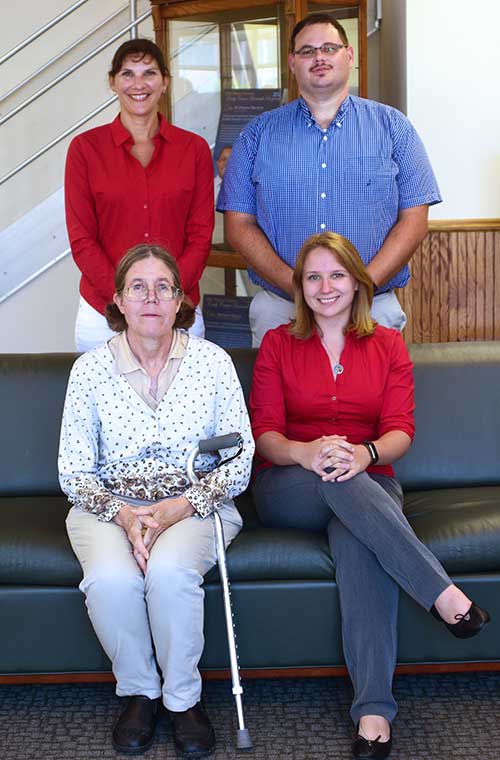 Teachers will help produce and characterize biomass from plants and algae as part of a research project that uses neutron scattering and computer simulation to examine the fundamental structure of plant cell walls. The project goal is to find better, faster ways to obtain biofuels and bioproducts from photosynthetic biomass. Algae and plants are produced under controlled lab conditions to obtain deuterium-labeled biomass samples for neutron scattering and NMR experiments. Labeling with deuterium, the naturally occurring, stable heavy isotope of hydrogen, is a standard method for neutron scattering, NMR, and kinetic research. The teachers will assist in laboratory production of trees, algae, duckweed, and grasses for these structural studies. Light microscopy will be used to examine cellular structure at the micrometer level. Photosynthetic activity will be evaluated by measuring chlorophyll fluorescence, carbon dioxide uptake and oxygen evolution.
Teachers will help produce and characterize biomass from plants and algae as part of a research project that uses neutron scattering and computer simulation to examine the fundamental structure of plant cell walls. The project goal is to find better, faster ways to obtain biofuels and bioproducts from photosynthetic biomass. Algae and plants are produced under controlled lab conditions to obtain deuterium-labeled biomass samples for neutron scattering and NMR experiments. Labeling with deuterium, the naturally occurring, stable heavy isotope of hydrogen, is a standard method for neutron scattering, NMR, and kinetic research. The teachers will assist in laboratory production of trees, algae, duckweed, and grasses for these structural studies. Light microscopy will be used to examine cellular structure at the micrometer level. Photosynthetic activity will be evaluated by measuring chlorophyll fluorescence, carbon dioxide uptake and oxygen evolution.ORNL Division: Chemical Sciences Division
Mentor: Barbara R. Evans
Teachers: Freddie Napier, Kelly Russo, Bonnie Sansenbaugher
Synthesis of Novel Lithium Fluoride- Europium - doped: Calcium Fluoride Scintillators for Neutron Detection
 This research project will be conducted in ORNL’s Chemical Sciences Division (CSD), Materials Chemistry Group and is designed to allow participants to better understand processes required to conduct a research project on scintillators for neutron detection. The teachers will experience the multifaceted levels of conducting research. They will be given a research assignment and work with a research scientist to understand the required background, processes, and safety procedures. Along with learning to apply many scientific concepts to a real-world problem, they will learn laboratory skills which will enrich and enhance their teaching when they return to their classrooms. In addition, during the two-week program, the teachers will meet other researchers within the Group and Laboratory community and learn about other ORNL projects.
This research project will be conducted in ORNL’s Chemical Sciences Division (CSD), Materials Chemistry Group and is designed to allow participants to better understand processes required to conduct a research project on scintillators for neutron detection. The teachers will experience the multifaceted levels of conducting research. They will be given a research assignment and work with a research scientist to understand the required background, processes, and safety procedures. Along with learning to apply many scientific concepts to a real-world problem, they will learn laboratory skills which will enrich and enhance their teaching when they return to their classrooms. In addition, during the two-week program, the teachers will meet other researchers within the Group and Laboratory community and learn about other ORNL projects.ORNL Division: Chemical Sciences
Mentor: M. Parans Paranthaman
Facilitator: Jim Davis
Teachers: Tracy Barnett, Don Kress, Paul McIntyre, Scott Wilson
Introduction to Molecular Dynamics Simulations for Proteins and Protein Folding/Unfolding
 In the time frame available the group will visualize crystal structure of the Ubiquitin protein and run molecular dynamics simulations (MD) to relax the structure. Following brief introduction, two additional simulations will be performed. These additional simulations will include: 1) a short steered-MD simulation of the folding and unfolding of the de novo peptide Chignolin, and 2) a high-temperature unfolding simulation of Chignolin and/or Ubiquitin. Analysis of the MD trajectories generated from the unfolding/folding simulations of Chignolin will then be performed using a special interface to the VMD software package, specifically designed for high-school students (VMDlite), and simple python scripts. This project, while previously computationally demanding, can now be performed on desktop and laptop computers at the high school level due to advances in MD simulation software implementation and computer power, and as such the work performed here can be directly transferable to the classroom.
In the time frame available the group will visualize crystal structure of the Ubiquitin protein and run molecular dynamics simulations (MD) to relax the structure. Following brief introduction, two additional simulations will be performed. These additional simulations will include: 1) a short steered-MD simulation of the folding and unfolding of the de novo peptide Chignolin, and 2) a high-temperature unfolding simulation of Chignolin and/or Ubiquitin. Analysis of the MD trajectories generated from the unfolding/folding simulations of Chignolin will then be performed using a special interface to the VMD software package, specifically designed for high-school students (VMDlite), and simple python scripts. This project, while previously computationally demanding, can now be performed on desktop and laptop computers at the high school level due to advances in MD simulation software implementation and computer power, and as such the work performed here can be directly transferable to the classroom.ORNL Division: Biosciences
Mentor: Jeremy Smith
Assistants: Adam Green, John Eblen, Rupesh Agarwal, and Micholas Smith
Teachers: Anthony Canestaro, Larry Cook, Ken Craig, Jim Taylor
-
- Use of cytogenetic tools for the assessment of ionizing radiation induced DNA damage in human lymphocytes
- Investigation of Biomass Structure to Improve Biofuels
- Synthesis of Novel Lithium Fluoride- Europium - doped: Calcium Fluoride Scintillators for Neutron Detection
- Crystal Structure of the Protein Lysozyme followed by a Molecular Dynamics Simulation
Use of cytogenetic tools for the assessment of ionizing radiation induced DNA damage in human lymphocytes
 Exposure to ionizing radiation (IR) induces a wide spectrum of DNA lesions including DNA single strand breaks, double strand breaks, oxidative DNA damage and DNA-protein crosslinks. Among them, double strand break (DSB) is the most critical lesion, which when mis-repaired or mis-rejoined results in the formation of asymmetrical (dicentric chromosomes and rings) and symmetrical (translocations) aberrations. Since the frequencies of different chromosomal aberrations correlate with radiation dose, these aberrations are being used to predict the absorbed radiation dose in humans. At the Cytogenetics Biodosimetry Laboratory at Oak Ridge, micronucleus and dicentric chromosome assays are being routinely used for estimating the absorbed radiation dose in the peripheral blood lymphocytes of humans after accidental or occupational exposures. In the current project, teachers will be trained to recognize and score the frequency of dicentric chromosomes in blinded lymphocyte samples irradiated with different doses of gamma rays. Additionally, teachers will participate in a project that is aimed to analyze genome-wide distribution of IR induced symmetrical chromosomal aberrations (translocations) using the state of the art technique, multicolor fluorescence in situ hybridization (M-FISH). Translocations are stable exchanges between different chromosomes that have the potential to drive cancer development processes. Our main goal is to increase the surge capacity of cytogenetic scorers to meet the requirements of radiation/nuclear mass casualty events where tens and thousands of blood samples need to be analyzed for radiation dose assessment.
Exposure to ionizing radiation (IR) induces a wide spectrum of DNA lesions including DNA single strand breaks, double strand breaks, oxidative DNA damage and DNA-protein crosslinks. Among them, double strand break (DSB) is the most critical lesion, which when mis-repaired or mis-rejoined results in the formation of asymmetrical (dicentric chromosomes and rings) and symmetrical (translocations) aberrations. Since the frequencies of different chromosomal aberrations correlate with radiation dose, these aberrations are being used to predict the absorbed radiation dose in humans. At the Cytogenetics Biodosimetry Laboratory at Oak Ridge, micronucleus and dicentric chromosome assays are being routinely used for estimating the absorbed radiation dose in the peripheral blood lymphocytes of humans after accidental or occupational exposures. In the current project, teachers will be trained to recognize and score the frequency of dicentric chromosomes in blinded lymphocyte samples irradiated with different doses of gamma rays. Additionally, teachers will participate in a project that is aimed to analyze genome-wide distribution of IR induced symmetrical chromosomal aberrations (translocations) using the state of the art technique, multicolor fluorescence in situ hybridization (M-FISH). Translocations are stable exchanges between different chromosomes that have the potential to drive cancer development processes. Our main goal is to increase the surge capacity of cytogenetic scorers to meet the requirements of radiation/nuclear mass casualty events where tens and thousands of blood samples need to be analyzed for radiation dose assessment.ORAU Division: CBL, REACTS, ORISE
Mentor: Adayabalam S. Balajee
Assistant: Maria Escalona
Teachers: Julie Asiello, Laura Banks, Leah Carmichael, Chris Hudson, Amy Raught
Investigation of Biomass Structure to Improve Biofuels
 Teachers will help produce and characterize biomass from plants and algae as part of a research project that uses neutron scattering and computer simulation to examine the fundamental structure of plant cell walls. The project goal is to find better, faster ways to obtain biofuels and bioproducts from photosynthetic biomass. Algae and plants are produced under controlled lab conditions to obtain deuterium-labeled biomass samples for neutron scattering and NMR experiments. Labeling with deuterium, the naturally occurring, stable heavy isotope of hydrogen, is a standard method for neutron scattering, NMR, and kinetic research. The teachers will assist in laboratory production of trees, algae, duckweed, and grasses for these structural studies. Light microscopy will be used to examine cellular structure at the micrometer level. Photosynthetic activity will be evaluated by measuring chlorophyll fluorescence, carbon dioxide uptake and oxygen evolution.
Teachers will help produce and characterize biomass from plants and algae as part of a research project that uses neutron scattering and computer simulation to examine the fundamental structure of plant cell walls. The project goal is to find better, faster ways to obtain biofuels and bioproducts from photosynthetic biomass. Algae and plants are produced under controlled lab conditions to obtain deuterium-labeled biomass samples for neutron scattering and NMR experiments. Labeling with deuterium, the naturally occurring, stable heavy isotope of hydrogen, is a standard method for neutron scattering, NMR, and kinetic research. The teachers will assist in laboratory production of trees, algae, duckweed, and grasses for these structural studies. Light microscopy will be used to examine cellular structure at the micrometer level. Photosynthetic activity will be evaluated by measuring chlorophyll fluorescence, carbon dioxide uptake and oxygen evolution.ORNL Division: Chemical Sciences Division
Mentors: Barbara R. Evans
Teachers: Jamie Bartholomew, Danielle Lee, Jeremy Pease, Kate Zakrzewski
Synthesis of Novel Lithium Fluoride- Europium - doped: Calcium Fluoride Scintillators for Neutron Detection
 This research project will be conducted in ORNL’s Chemical Sciences Division (CSD), Materials Chemistry Group and is designed to allow participants to better understand processes required to conduct a research project on scintillators for neutron detection. The teachers will experience the multifaceted levels of conducting research. They will be given a research assignment and work with a research scientist to understand the required background, processes, and safety procedures. Along with learning to apply many scientific concepts to a real-world problem, they will learn laboratory skills which will enrich and enhance their teaching when they return to their classrooms. In addition, during the two-week program, the teachers will meet other researchers within the Group and Laboratory community and learn about other ORNL projects.
This research project will be conducted in ORNL’s Chemical Sciences Division (CSD), Materials Chemistry Group and is designed to allow participants to better understand processes required to conduct a research project on scintillators for neutron detection. The teachers will experience the multifaceted levels of conducting research. They will be given a research assignment and work with a research scientist to understand the required background, processes, and safety procedures. Along with learning to apply many scientific concepts to a real-world problem, they will learn laboratory skills which will enrich and enhance their teaching when they return to their classrooms. In addition, during the two-week program, the teachers will meet other researchers within the Group and Laboratory community and learn about other ORNL projects.ORNL Division: Chemical Sciences Division
Mentor: M. Parans Paranthaman
Facilitator: James R. Davis
Teachers: Annette Gillespie, Ashley Gilomen, Sarah Johnson, Stephanie Kimberlin
Crystal Structure of the Protein Lysozyme followed by a Molecular Dynamics Simulation
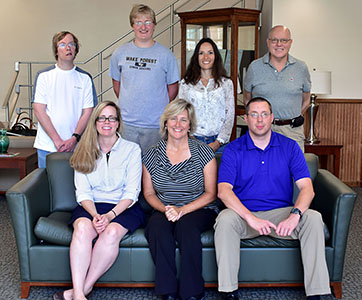 The group will crystallize the protein lysozyme, collect x-ray diffraction data, solve the crystal structure and run a molecular dynamics (MD) computer simulation. Crystallography gives a static picture while MD reveals the protein dynamics. We will use off the shelf grocery store products to crystallize lysozyme. The UT/ORNL Center for Molecular Biophysics will assist our group in setting up an MDS or molecular dynamics simulation. Our group will then be able to take the experiment back to their classrooms. This project, while very advanced a short time ago, can now be performed at the high school level due to advances in current technologies and computer power.
The group will crystallize the protein lysozyme, collect x-ray diffraction data, solve the crystal structure and run a molecular dynamics (MD) computer simulation. Crystallography gives a static picture while MD reveals the protein dynamics. We will use off the shelf grocery store products to crystallize lysozyme. The UT/ORNL Center for Molecular Biophysics will assist our group in setting up an MDS or molecular dynamics simulation. Our group will then be able to take the experiment back to their classrooms. This project, while very advanced a short time ago, can now be performed at the high school level due to advances in current technologies and computer power.ORNL Division: Neutron Sciences Directorate and UT/ORNL Center for Molecular Biophysics
Mentors: Flora Meilleur and Jeremy Smith
Facilitator:Brian Hingerty
Assistants: Hector Velazquez, John Eblen and Adam Green
Teachers: Rebekah Durham, Alaina Kilpatrick, Darlene Rutledge, Neil Snedeker
-
- Investigating Cell Wall Structure to Improve Biofuel Production
- Absorbent Tests for the Safe Storage of Radioactive Waste or Find a Better Cat Litter
- Lithium Titanium Oxide – Synthesis, Characterization and Uses in Lithium Ion Batteries
- Physical Sciences-Oncology Network Data Coordinating Center (PS-ON DCC)
Investigating Cell Wall Structure to Improve Biofuel Production
 Teachers will help produce and characterize biomass from plants and algae as part of a research project that uses neutron scattering and computer simulation to examine the fundamental structure of plant cell walls. The project goal is to find better, faster ways to convert plant biomass to biofuels. The teachers will assist in laboratory production of algae, duckweed, and grasses for structural studies. Hydrolysis of cellulose in the cell walls by commercial enzymes will be compared for plants grown under different conditions. Structural effects at the cellular level will be evaluated by light microscopy. The teachers also will monitor the effects of cultivation conditions (such as illumination, aeration, and type of growth media) on the photosynthetic activity of the plants and microalgae by measuring carbon dioxide uptake and oxygen evolution.
Teachers will help produce and characterize biomass from plants and algae as part of a research project that uses neutron scattering and computer simulation to examine the fundamental structure of plant cell walls. The project goal is to find better, faster ways to convert plant biomass to biofuels. The teachers will assist in laboratory production of algae, duckweed, and grasses for structural studies. Hydrolysis of cellulose in the cell walls by commercial enzymes will be compared for plants grown under different conditions. Structural effects at the cellular level will be evaluated by light microscopy. The teachers also will monitor the effects of cultivation conditions (such as illumination, aeration, and type of growth media) on the photosynthetic activity of the plants and microalgae by measuring carbon dioxide uptake and oxygen evolution.ORNL Division: Chemical Sciences
Mentor: Barbara R. Evans
Teachers: Valerie Cangemi, Brian Kinney, Claudia Partee, Teresa Ware
Absorbent Tests for the Safe Storage of Radioactive Waste or Find a Better Cat Litter
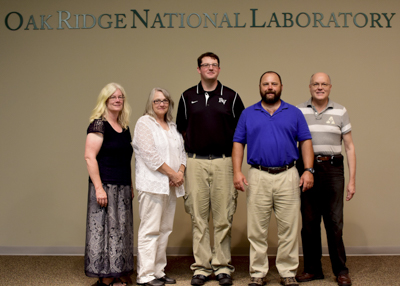 On Feb 14, 2014 a major accident occurred at the Waste Isolation Pilot Plant at Los Alamos National Laboratory in New Mexico caused by the wrong kind of cat litter. In this accident a single drum of nuclear waste broke open. In the past non-reactive absorbent was used. This time organic cat litter was used that reacted with the waste materials to cause heating, which then eventually caused the drum to burst. A large number of drums were apparently stored the same way. This is clearly a serious safety issue that could result in a biohazard for the general population.
On Feb 14, 2014 a major accident occurred at the Waste Isolation Pilot Plant at Los Alamos National Laboratory in New Mexico caused by the wrong kind of cat litter. In this accident a single drum of nuclear waste broke open. In the past non-reactive absorbent was used. This time organic cat litter was used that reacted with the waste materials to cause heating, which then eventually caused the drum to burst. A large number of drums were apparently stored the same way. This is clearly a serious safety issue that could result in a biohazard for the general population.The last time testing was done on these absorbents was Jan 2005. It is clearly the time for this to be revisited. We would like to perform testing to either confirm or refute the absorbent from ORNL Stores as well as the bags of Quik Solid maintained by the Waste Handlers meet minimum weight of water to weight of absorbent of ratio of 18 to one. Secondary goals could be defined to test the 18:1 ratio for freeze/thaw testing and shaker testing as well as determining the maximum absorption ratio achievable that would not release liquids. This is important for the safe transport of these materials to the storage site. We would then have a basis for determining the proper absorbent to be used as well as avoiding those that might react with the waste materials and cause leakage and environmental contamination.
ORNL Division: Environmental Protection and Waste Services Division
Mentors: Susan Michaud
Facilitator: Brian Hingerty
Teachers: Tony Barr, JP Davis, Ella Spiegel
Lithium Titanium Oxide – Synthesis, Characterization and Uses in Lithium Ion Batteries
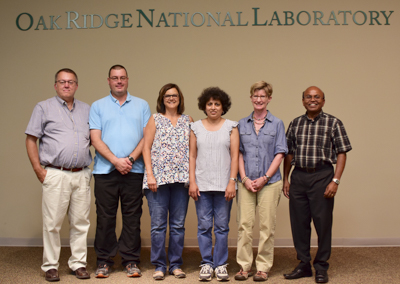 This research project will be conducted in ORNL’s Chemical Sciences Division (CSD), Materials Chemistry Group and is designed to allow participants to better understand processes required to conduct a research project on materials used to produce batteries. The teachers will experience the multifaceted levels of conducting research. They will be given a research assignment and work with a research scientist to understand the required background, processes, and safety procedures. Along with learning to apply many scientific concepts to a real-world problem, they will learn laboratory skills which will enrich and enhance their teaching when they return to their classrooms. In addition, during the two-week program, the teachers will meet other researchers within the Group and Laboratory community and learn about other ORNL projects.
This research project will be conducted in ORNL’s Chemical Sciences Division (CSD), Materials Chemistry Group and is designed to allow participants to better understand processes required to conduct a research project on materials used to produce batteries. The teachers will experience the multifaceted levels of conducting research. They will be given a research assignment and work with a research scientist to understand the required background, processes, and safety procedures. Along with learning to apply many scientific concepts to a real-world problem, they will learn laboratory skills which will enrich and enhance their teaching when they return to their classrooms. In addition, during the two-week program, the teachers will meet other researchers within the Group and Laboratory community and learn about other ORNL projects.ORNL Division: Chemical Sciences Division
Mentor: M. Parans Paranthaman
Facilitator: James R. Davis
Teachers: Steve Bias, Malika Karunaratne, Darla Nash, Mona Steigerwald
Physical Sciences-Oncology Network Data Coordinating Center (PS-ON DCC)
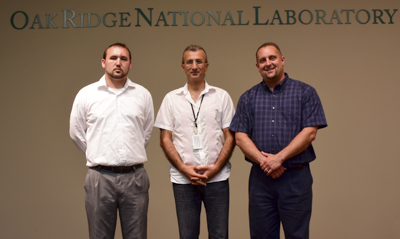 In 2009, NIH’s national cancer institute (NCI) and office of physical sciences oncology (OPSO) launched the Physical Sciences-Oncology Centers (PS-OC) program by awarding cooperative agreements to twelve leading institutions to establish multidisciplinary cancer research initiatives, collectively making up an interactive and collaborative PS-OC Network composed of over 60 institutions. The ultimate goal of the PS-OC Network is to utilize physical sciences and engineering principles to catalyze new fields of study in basic and clinical cancer research, generate new knowledge of the disease at all length scales, and facilitate paradigm-shifting research. In 2012, the Physical Sciences-Oncology Centers Data Coordinating Center (PS-OC DCC) was launched with the goal of creating a unique informatics infrastructure to coordinate PS-OC generated data and high-performance computing analyses with the intent of catalyzing discovery in cancer research not otherwise possible without such coordination. The PS-OC DCC is responsible for all aspects of the informatics system design, understanding the physical measurements data for effective database strategies, and providing leadership in bridging data and physics through state-of-the-art computational analyses. Currently, the PS-OC DCC resides at the University of Tennessee, under development by a UT/ORNL team. The combined UT/ORNL infrastructure offers a powerful environment where the compilation of complex physical sciences data and models will eventually be seamlessly connected to back-end high performance computing. With an anticipated first-year data volume at 200 TB increasing 50 TB annually, the DCC will capitalize on UT/ORNL capabilities in large-volume storage management and high- speed data transfers. In addition to developing a secure, fast infrastructure that can handle Big Data, the challenges include understanding the involved physical science measurement technologies and material characterization, capturing the essential experimental parameters in metadata, and developing use cases for self- consistent physics-based modeling. This is not trivial since physical science data span diverse electromagnetic, chemical, and mechanical measurements from a wide variety of customized/specialized experiments and commercial tools.
In 2009, NIH’s national cancer institute (NCI) and office of physical sciences oncology (OPSO) launched the Physical Sciences-Oncology Centers (PS-OC) program by awarding cooperative agreements to twelve leading institutions to establish multidisciplinary cancer research initiatives, collectively making up an interactive and collaborative PS-OC Network composed of over 60 institutions. The ultimate goal of the PS-OC Network is to utilize physical sciences and engineering principles to catalyze new fields of study in basic and clinical cancer research, generate new knowledge of the disease at all length scales, and facilitate paradigm-shifting research. In 2012, the Physical Sciences-Oncology Centers Data Coordinating Center (PS-OC DCC) was launched with the goal of creating a unique informatics infrastructure to coordinate PS-OC generated data and high-performance computing analyses with the intent of catalyzing discovery in cancer research not otherwise possible without such coordination. The PS-OC DCC is responsible for all aspects of the informatics system design, understanding the physical measurements data for effective database strategies, and providing leadership in bridging data and physics through state-of-the-art computational analyses. Currently, the PS-OC DCC resides at the University of Tennessee, under development by a UT/ORNL team. The combined UT/ORNL infrastructure offers a powerful environment where the compilation of complex physical sciences data and models will eventually be seamlessly connected to back-end high performance computing. With an anticipated first-year data volume at 200 TB increasing 50 TB annually, the DCC will capitalize on UT/ORNL capabilities in large-volume storage management and high- speed data transfers. In addition to developing a secure, fast infrastructure that can handle Big Data, the challenges include understanding the involved physical science measurement technologies and material characterization, capturing the essential experimental parameters in metadata, and developing use cases for self- consistent physics-based modeling. This is not trivial since physical science data span diverse electromagnetic, chemical, and mechanical measurements from a wide variety of customized/specialized experiments and commercial tools.ORNL Division: Computational Sciences and Engineering
Mentor: Ali Passian
Teachers: Timothy Elliott, Dominic Mileto
